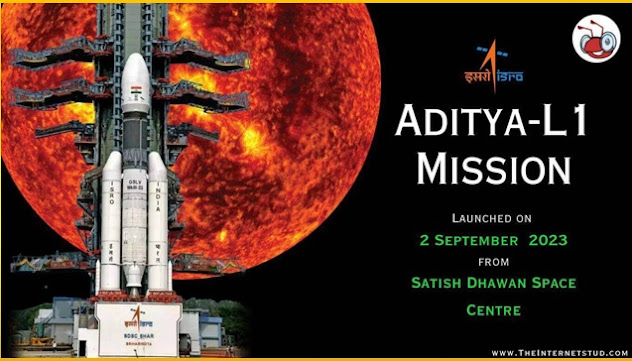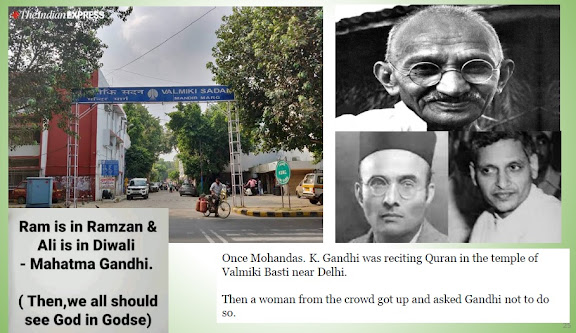ISRO MADE 2ND SEPTEMBER 2023 HISTORIC BY ITS ADITYA – L 1 MISSION - ITS 25TH FLIGHT OF PSLV – XL VARIANT
Aditya-L1 launching by ISRO is India’s first solar observatory mission.
The Polar Satellite Launch
Vehicle (PSLV), in its 59th flight with the Aditya-L1 onboard, took off from
the Satish Dhawan Space Centre in Sriharikota at 11.50 a.m on 2nd September 2023. About 63 minutes after
take-off, the separation from the satellite took place with the PSLV launching
the Aditya-L1 spacecraft in a highly eccentric orbit around Earth at 12.53 p.m.
This was among the longest flights of ISRO’s workhorse launch vehicle in recent
times.
Following the launch, Aditya-L1 will stay in orbit around Earth for 16 days, during which it will undergo five manoeuvres to gain the necessary velocity for its long journey towards the sun.
Subsequently, Aditya-L1 will undergo a Trans-Lagrangian1
insertion manoeuvre, marking the beginning of its 110-day trajectory to the
destination around the L1 Lagrange point. Upon arrival at the L1 point, another
manoeuvre binds Aditya-L1 to an orbit around L1, a balanced gravitational
location between the earth and the sun.
The spacecraft will perform
orbital manoeuvres by using its Liquid Apogee Motor (LAM) engine to reach L1.
Aditya-L1 will stay approximately 1.5 million km away from earth, directed
towards the sun, which is about 1% of the earth-sun distance.
Aditya-L1 has a mission life
of five years during which its payloads are expected to provide the most
crucial information to understand the problem of coronal heating; coronal mass
ejection; pre-flare and flare activities and their characteristics; dynamics of
space weather; and propagation of particles and fields.
Seven payloads : The seven
payloads onboard Aditya-L1 are: Visible Emission Line Coronagraph (VELC); Solar
Ultraviolet Imaging Telescope (SUIT); Solar Low Energy X-ray Spectrometer
(SoLEXS); High Energy L1 Orbiting X-ray Spectrometer (HEL1OS); Aditya Solar
wind Particle Experiment (ASPEX); Plasma Analyser Package For Aditya (PAPA);
and Advanced Tri-axial High Resolution Digital Magnetometers.
The solar panels on Aditya-L1
have been deployed and the spacecraft has started generating power.
After the launch, ISRO Chairperson S. Somanath said, “The Aditya-L1 spacecraft has been injected in an elliptical orbit of 235 km by 19,500 km, which is as intended, very precisely by the PSLV. This is a very unique mission mode here with the upper stage of the PSLV taking two burn sequences for injecting the primary satellite for the first time. From now, the Aditya-L1 will make its journey. After some manoeuvres, it will start its journey towards the L-1 point. It is a very long journey of almost 125 days.”
Aditya in Sanskrit means the
Sun. L1 here refers to Lagrange Point 1 of the Sun-Earth system. For common
understanding, L1 is a location in space where the gravitational forces of two
celestial bodies, such as the Sun and Earth, are in equilibrium. This allows an
object placed there to remain relatively stable with respect to both celestial
bodies.
The strategic placement at the L1
Lagrange point ensures that Aditya-L1 can maintain a constant, uninterrupted
view of the Sun. This location also allows the satellite to access solar
radiation and magnetic storms before they are influenced by Earth's magnetic
field and atmosphere. Additionally, the L1 point’s gravitational stability
minimizes the need for frequent orbital maintenance efforts, optimizing the
satellite's operational efficiency.
Ashoka University's vice-chancellor and eminent astrophysicist, Somak Raychaudhury, reported:
“One of our primary goals is
to understand why the Sun's corona is astonishingly hot, reaching temperatures
of up to 2 million degrees, in stark contrast to the relatively cooler surface
of the Sun at around 5,000 degrees."
The main Scientists behind
this remarkable successful launch of Aditya L 1 were ISRO Chairman S. Somanath,
Senior Solar Scientist Dr. K. Sankarasubramanian and Woman Project Director of
the Sun Mission , Nigar Shaji.
E-TOUCH IS PROUDLY HONOUR THEM ALL FOR THEIR HISTORIC SUCCESSFUL SOLAR MISSION BY PRESENTING A BOUQUET






Comments